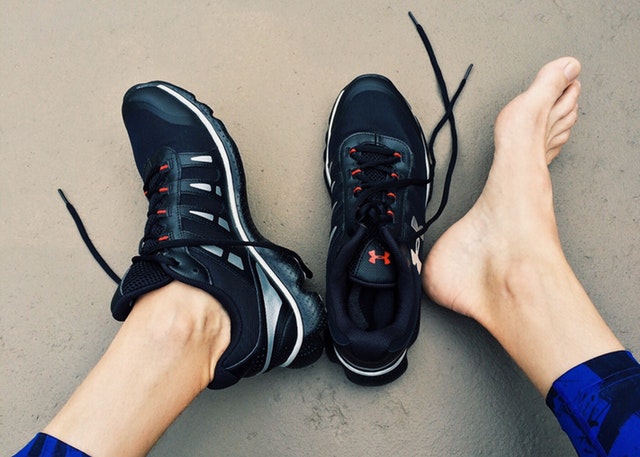6 Common Foot Problems and How To Fix Them
Disclaimer: This is a partnered post. Our feet go through a lot on a daily basis, and we often don’t stop to give them the TLC they need until something starts to hurt. It’s estimated that one in five adults suffers from some sort of foot pain and the majority of cases can be traced back to one of the following 6 common foot problems. So here’s what they are and how to solve them.
1. Athletes Foot
Athlete’s foot is a fungal infection that is aptly named because it tends to affect athletic people who spend a lot of time in sweaty trainers. Athletes foot thrives in damp environments and so can be picked up easily in communal showers and changing rooms.
Once you have athlete’s foot you’ll notice that your feet are dry, itchy and flaky and it can get very uncomfortable.
The key to getting rid of athlete’s foot is a prescription antifungal medication which can be applied to the affected area as a powder or cream.
To stop you picking up athlete’s foot again, try to keep your feet dry and wear flip flops in public locker rooms or showers.
2. Cracked Heels
It’s estimated that cracked heels affect up to 20% of US adults, which is a lot of people. There are a number of causes for cracked heels but the most common is being overweight and wearing open shoes such as sandals.
This is because cracked heels form when the fat pad under the heel is forced under pressure, expanding outwards and then cracking the callouses that have developed on the outside of the heel.
Being overweight increases the pressure on the fat pad and open shoes tend to lead to harder calluses while not providing any barrier to the fat pad expanding outwards.
To fix cracked heels you will need to purchase the appropriate foot care for dry cracked skin and will also need to exfoliate the dry cracked skin away.
3. Blisters
Blisters are caused by friction and so are commonly the result of ill-fitting shoes and they can be made worse by sweat, which is why they tend to be more prolific in the summer months.
The key to avoiding blisters is to minimise friction on your feet by wearing the right size shoes and by using barrier protection if you feel a patch of friction forming. If you do get a blister then try to leave it alone as they heal much better when they are not popped.
4. Flat foot
People with flat feet don’t have an arch and this can put a lot of stress and strain on their ankles and foot ligaments leading to pain. Flat feet can be both inherited and caused by environmental factors such as standing for long periods of time.

The good news is that the pain experienced by those with flat feet can be avoided by wearing insoles or shoes that have proper arch support.
These insoles can be custom made to fit the individual by a podiatrist but there are also over the counter versions available in most pharmacies.
5. Plantar Fasciitis
Plantar Fasciitis occurs when the plantar fascia becomes inflamed and can be very painful. The pain tends to ease off throughout the day, but without proper recovery, it can worsen.
Plantar fasciitis is most commonly found in active individuals who undertake high impact sports that involve a lot of running or jumping.
To reduce your likelihood of experiencing it, try to wear activity appropriate footwear that provides correct cushioning and support and if you do experience it then ice the area, rest and allow it to heal before continuing with your activities.
6. Corns and Bunions
Finally, corns and bunions are caused by pressure on the angular parts of your feet such as the joints of your big and little toes. Both corns and bunions can end up being very painful and so it is important to wear correctly fitted footwear and to avoid restrictive styles such as high heels or pointed-toe shoes.
Corns can often be kept at bay by a healthcare professional who will cut them out when they become a problem, but bunions are more problematic to treat as they are in fact a growth on the bone itself and therefore require surgery to remove.
So there you have it, 6 of the most common foot problems and how to fix them. Unsurprisingly, ill-fitting shoes are responsible for almost all of the foot problems mentioned within the article.
The next time you’re looking at buying a new pair of shoes, stop and ask yourself if they’re going to do you more harm than good.
Google+


